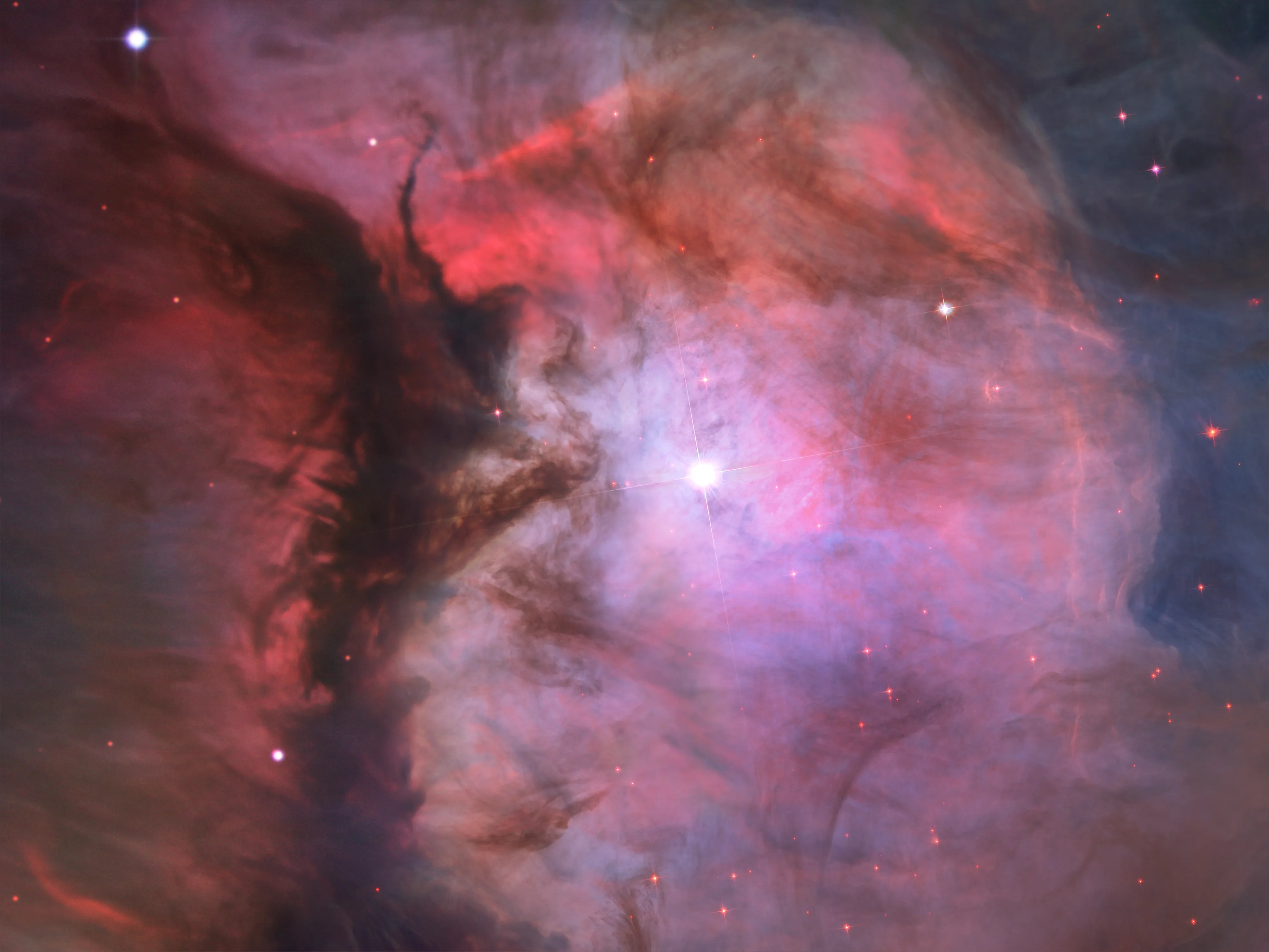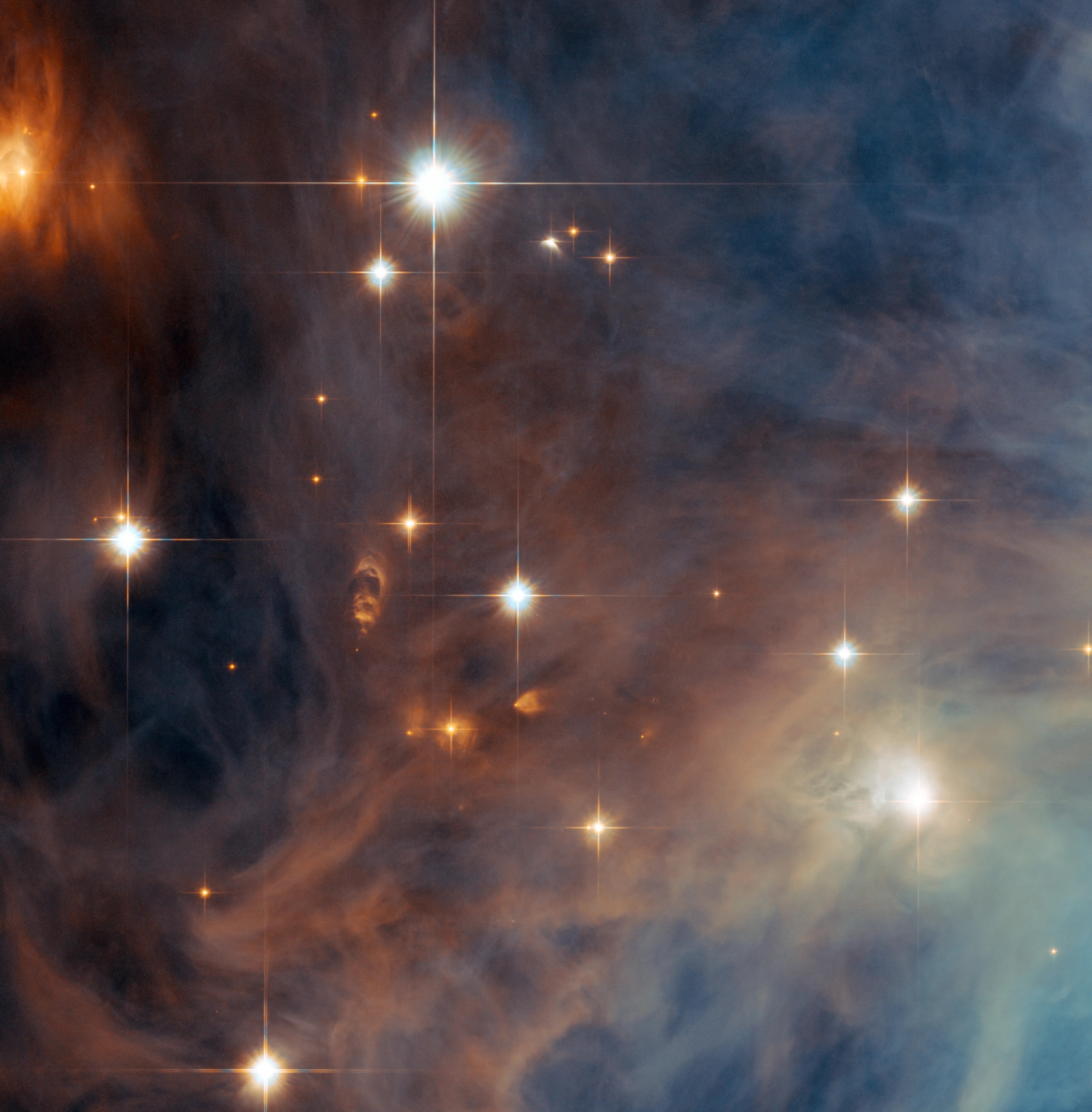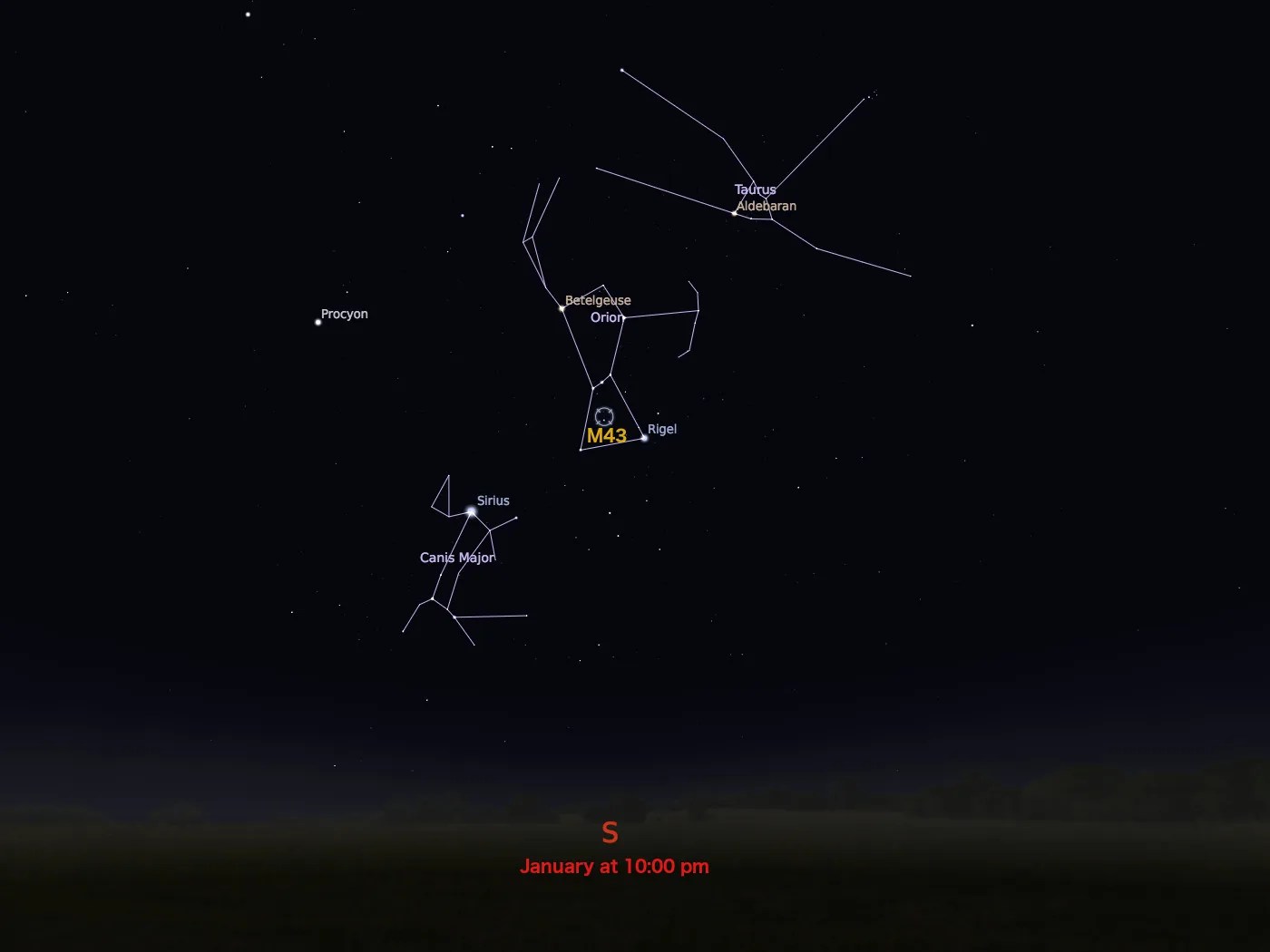Messier 43
Messier 43 is a neighbor to Messier 42, the Orion Nebula.
Distance
1,600 light-years
Apparent Magnitude
9.0
constellation
Orion
object type
Nebula

Separated from the Orion Nebula (M42) by only a dark lane of dust, M43 was recognized as a distinct nebula by the French astronomer Jean-Jacques d’Ortous de Mairan in 1731. A massive star is illuminating M43 and sculpting its landscape of dust and gas with its radiation. Astronomers call the area a miniature Orion Nebula because of its small size and the single star that is shaping it. The Orion Nebula itself is much larger and has four hefty stars that are carving the dust-and-gas terrain.

Both nebulas are part of the massive stellar nursery called the Orion Molecular Cloud Complex, which includes several other nebulas, such as the Horsehead Nebula (Barnard 33) and the Flame Nebula (NGC 2024). At the center of this view of M43, taken using infrared and visible-light cameras on Hubble, sits the massive star that is warping the gas and dust around it.
Located 1,600 light-years from Earth, M43 has an apparent magnitude of 9. It can be spotted through a small telescope and is best observed during January.
For more information about Hubble’s observations of M43, see:

Explore Hubble's Messier Catalog
The following pages contain some of Hubble’s best images of Messier objects.

Messier 1 (The Crab Nebula)
Better known as the Crab Nebula, Charles Messier originally mistook Messier 1 for Halley’s Comet, which inspired him to create…

Messier 2
Hubble's image of Messier 2 is comprised of visible and infrared wavelengths of light.

Messier 3
Messier 3 holds more than 500,000 stars.




